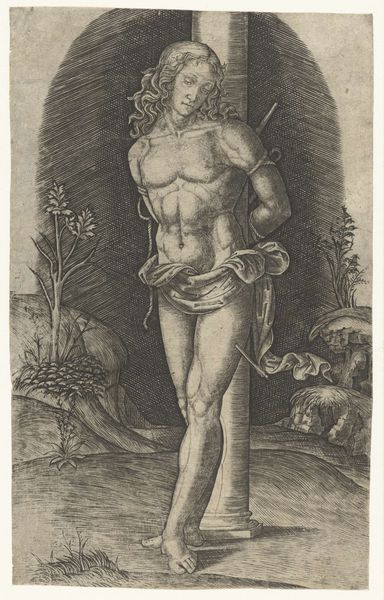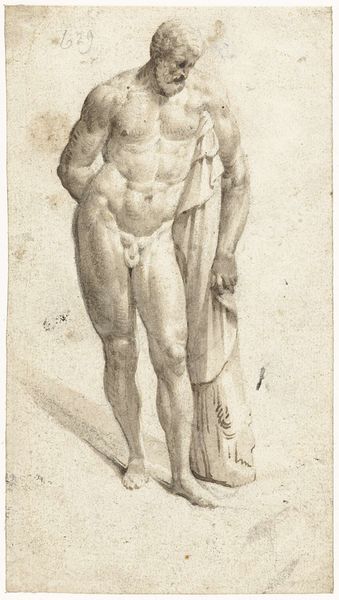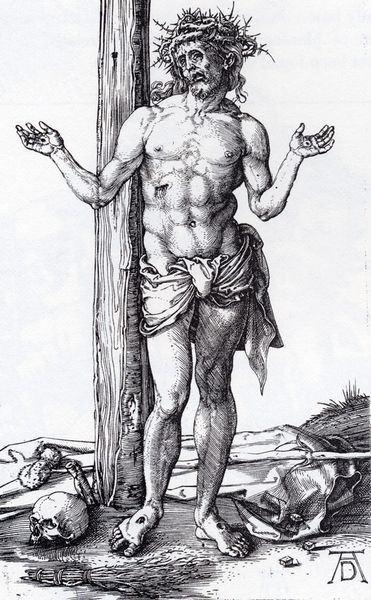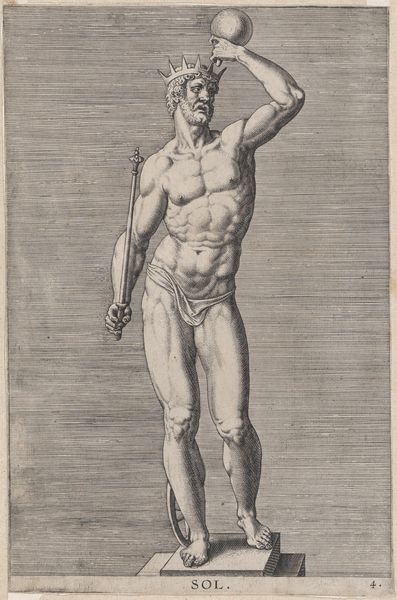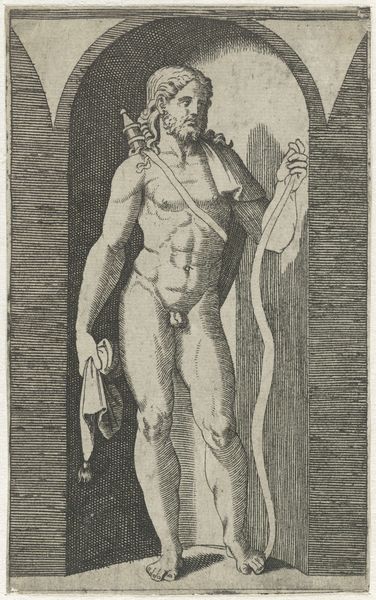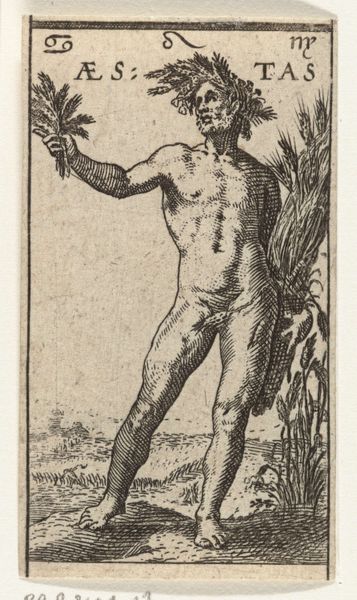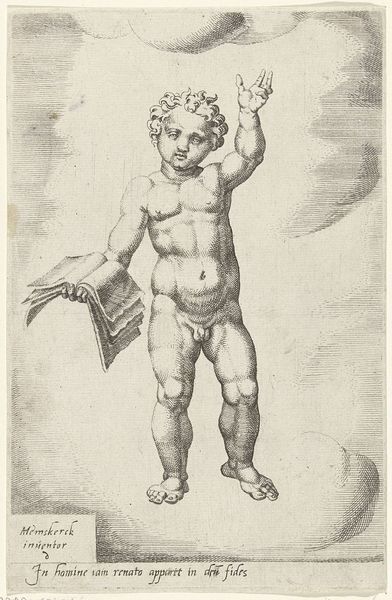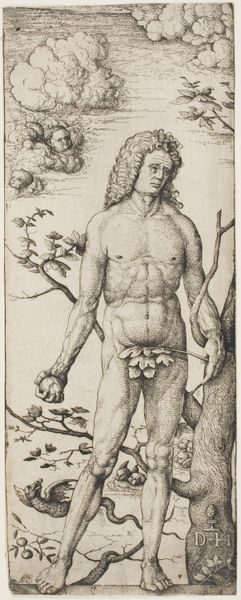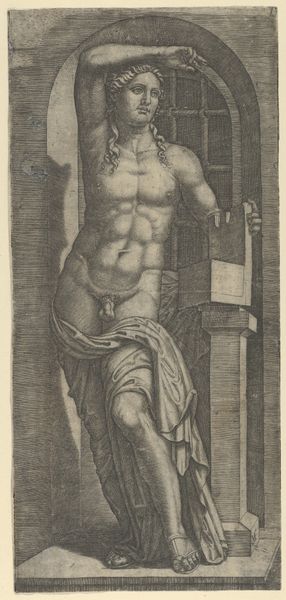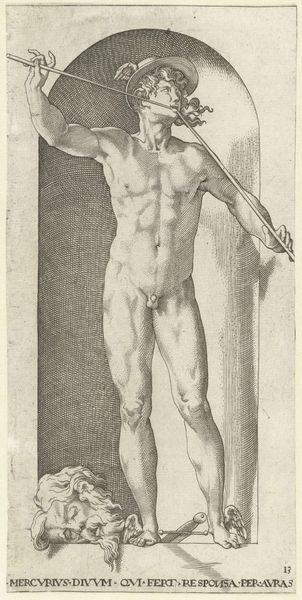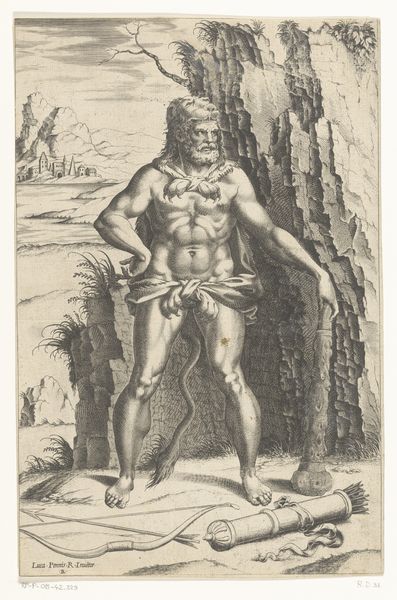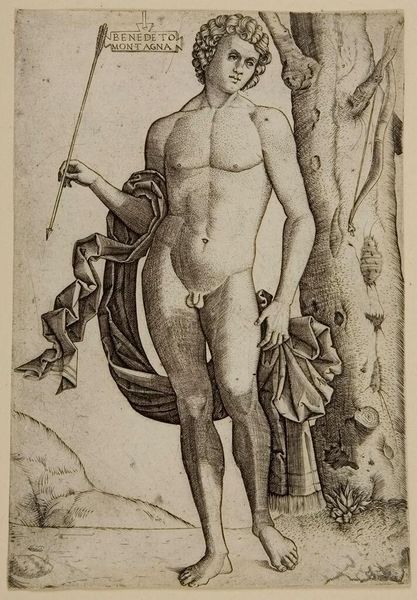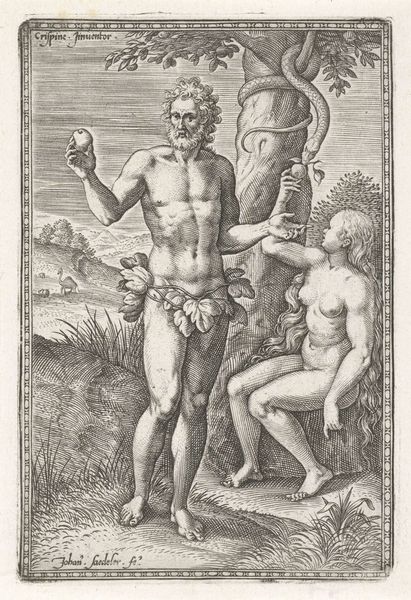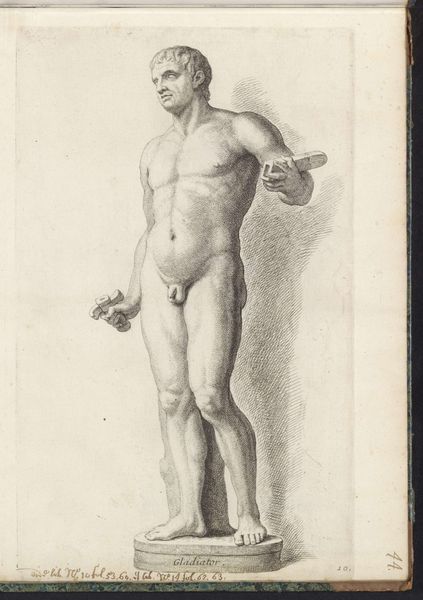
Dimensions: height 115 mm, width 70 mm
Copyright: Rijks Museum: Open Domain
This is Christus als man van smarten, met geheven handen, an engraving made by Wierix in the Netherlands around the turn of the 17th century. Images like this one depicting Christ as the Man of Sorrows played a key role in Counter-Reformation piety. This image creates meaning through established visual codes. The crown of thorns, the wounds in Christ's hands and feet, and the skull at the base of the cross all refer to his suffering and sacrifice. But it's worth noting that the image also subtly reflects the social and political tensions of its time. The Netherlands, then under Spanish rule, was deeply divided between Catholics and Protestants. Images like this one were often used to reinforce Catholic doctrine and identity in the face of the Protestant Reformation. To fully understand this work, we need to look at the broader history of religious art and the specific context of the Counter-Reformation. Examining historical documents can reveal the complex interplay between art, religion, and politics in 17th-century Europe. Art like this reflects not just personal belief but also the social forces shaping early modern Europe.
Comments
No comments
Be the first to comment and join the conversation on the ultimate creative platform.
